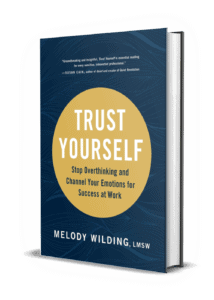Worrying all the time is a reality for many entrepreneurs. Long hours working alone, increased pressure to succeed and the rigorous demands of running a business often result in concerns that multiply and go unchecked.
Whether it’s one or two big problems that nag at you consistently throughout the day or a host of little things that zip in and out of your head and break your concentration, there’s one simple way to manage them: take a worry break.
The Benefits of Worrying on a Schedule
A worry break is a scheduled time that you set aside on a regular basis to focus on the anxieties or problems that are preoccupying you.
If that sounds like a recipe for more stress, consider this: spending 15 to 20 minutes a day on a worry deep-dive can ultimately reduce your worries and help you cope more effectively with the challenges thrown at you. When you focus intensely on your concerns at a designated time instead of letting them run wild and interfere with your day, you’re more equipped to create constructive solutions.
If you’re ready to try a worry break, here’s how experts recommend you start:
Schedule a time for your worry break.
Pick a time, once a week to start, when you are usually alone and are less likely to be interrupted. Fifteen to twenty minutes is all you’ll need.
Ideally, you can eventually take a worry break on a daily basis, making it part of your routine. This also makes you less prone to skipping it on hectic or stressful days (which is when you need it most). Proactively tending to your mental well-being should be a habit, not an afterthought.
Set a calendar reminder, write it in your planner and commit to it.
Channel worries elsewhere until it’s time to focus on them.
Trying to fight off negative thoughts and emotions backfires. They will just pop back up like trying to hold a beach ball under water.
Instead, capture your worries in a document, journal or note. You may find it helpful to jot down stressful thoughts as they occur to you, especially if you feel worried about so many things that you can’t even keep track of them. (It happens – especially to us perfectionists.)
This serves a few purposes: it keeps you organized, gives you peace of mind you won’t forget anything important and means worries stay out of sight, out of mind until you’re prepared to tackle them. This may be difficult at first, but it gets easier.
In the moment, reassure yourself that you’ll have time to tackle the worry later – with greater focus and energy. Remind yourself that you have bigger, more important priorities to attend to right now, in the present moment and that worrying is a waste of your valuable time.
During your worry break, worry intensely, but worry well.
When your scheduled worry break arrives, don’t do anything but worry, but do so constructively.
1. Revisit the list of concerns you’ve written down. Which are no longer relevant? You may notice that many have resolved themselves and no longer nag at you. Immediately cross those off your list to give yourself a positive boost. Give yourself a pat on the back for being more resourceful and capable than you originally assumed.
2. Next, going through your list and circle only the remaining worries you can control or have some modicum of influence over – whether by taking an action or changing your mindset about a situation.
3. Take the items you circled one-by-one. Write them down and brainstorm five solutions to the situation (have a conversation, ask someone else for help, take a certain action). The point is to think creatively.
Asking yourself questions like the ones below can also unlock your creative thinking:
- What story or limiting thoughts am I telling myself about this situation?
- What would I do if I had unlimited time and resource or if X wasn’t a barrier?
- What would I like to happen?
- What will I do first?
In this process, you may discover that the worry isn’t actually not as big as a problem as your initially thought. When problems meet the light of day, you’ll probably find that solutions often come more naturally than you ever expected. It makes perfect sense: when you resist negative emotions like worry, they only become stronger. But when you confront them head-on, we diminish their power and often find ways to tackle them productively.
4. Pick one solution to try and decide when to try it. You may not be able to take action immediately. For example, you may have to defer having an important conversation until you have more information. Or you may decide that there is no good solution at the moment and decide to let the worry go.
Worry Break Over? Time to Move On
When your worry break is over, switch gears. If you feel fixated on a problem, remember that you’ll have another worry break on the calendar. In the meantime, you’re now free to focus your energy elsewhere, without the powerful cognitive toll that round-the-clock stress takes.
So, worry away — when the time is right.









